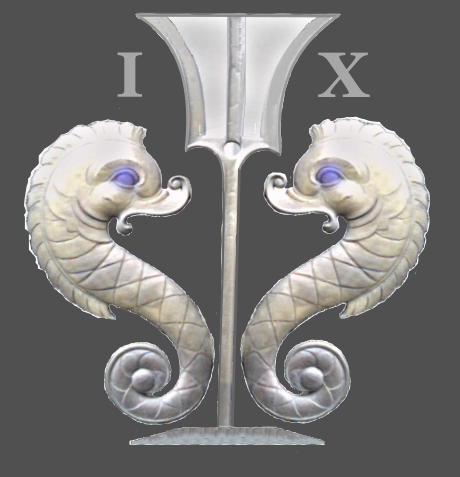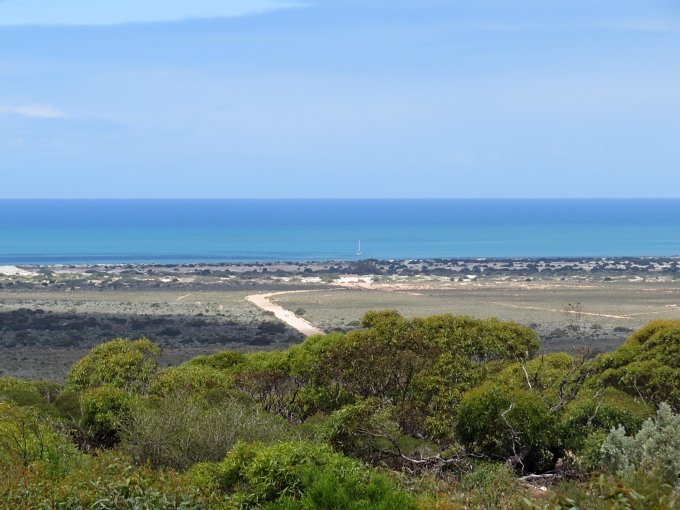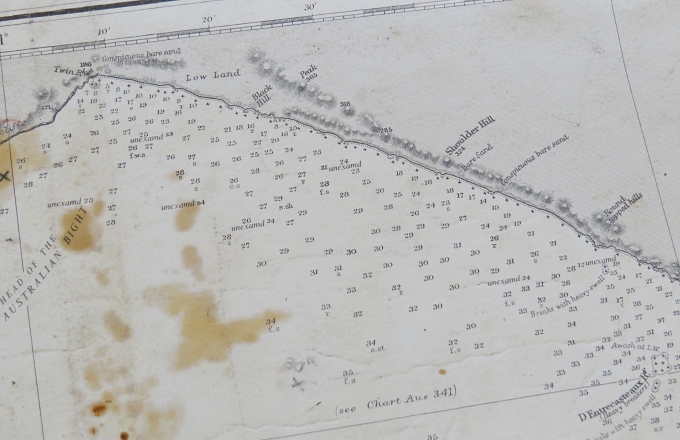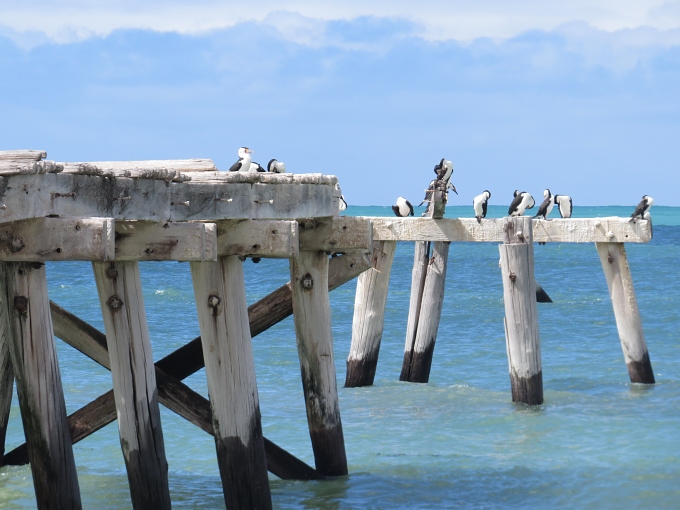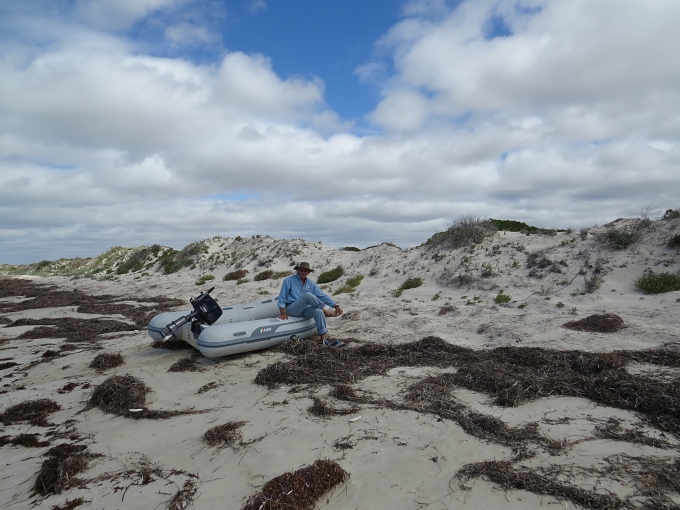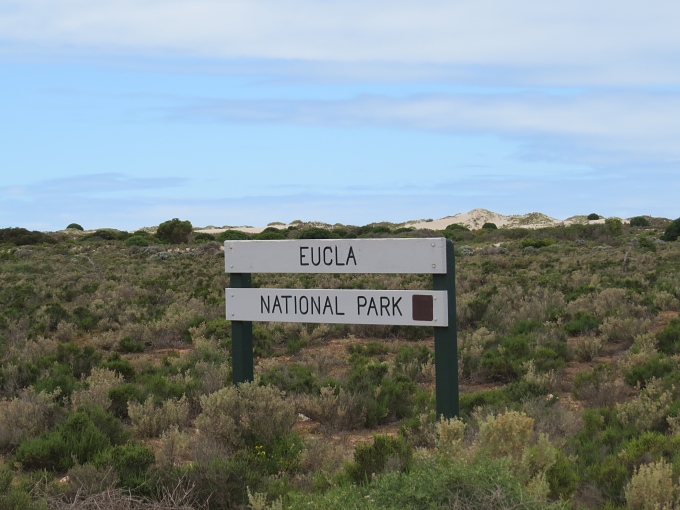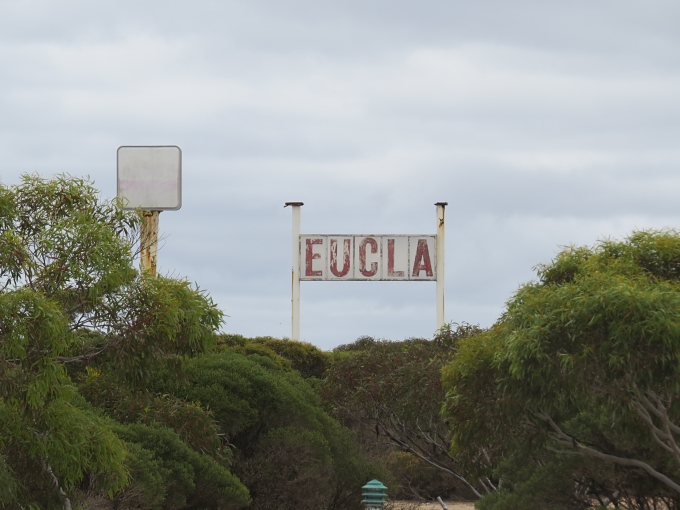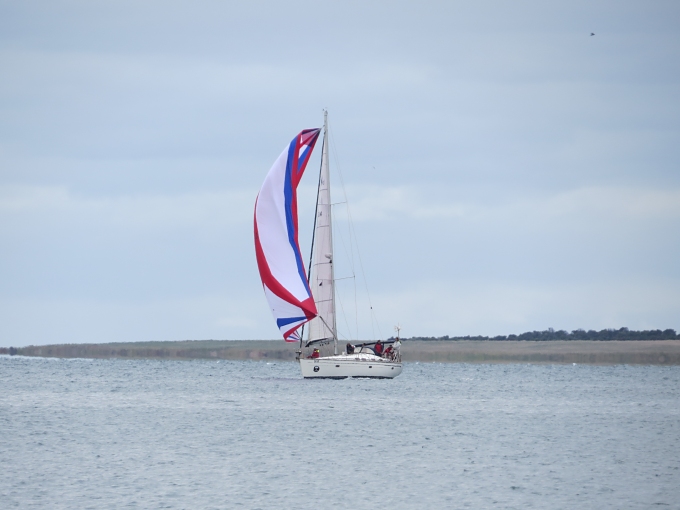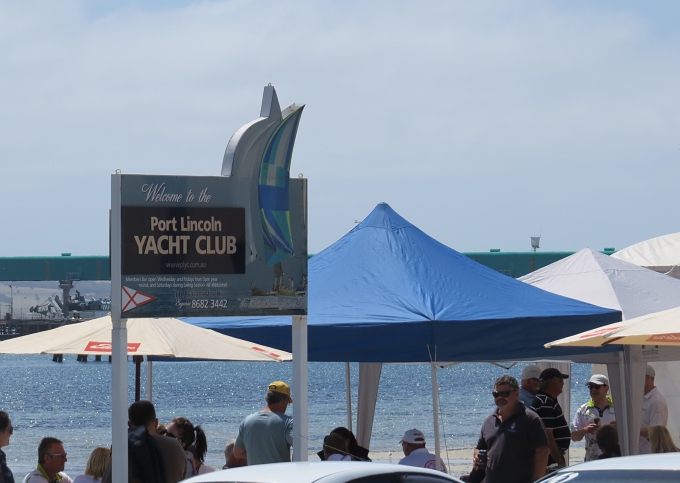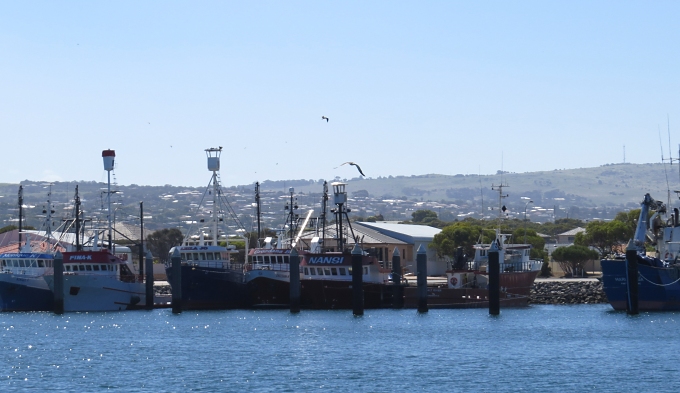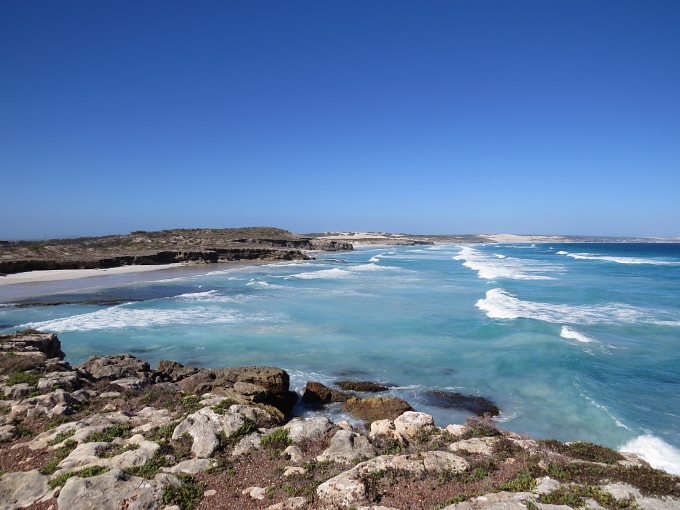Walking to Eucla - Pt. 2
/So where did we leave off … oh, yes, the big Eucla sign. About another 100m up the road, around a bend, the Eucla Motor Hotel came into view. We were hoping for a pub since a cold pint would have helped to wash down the rest of the flies, but we settled for a cold Diet Coke and a couple of sandwiches at the little attached restaurant. No other tables were occupied and the area facing the Bight was roped off. Not very picturesque or romantic, but a welcome respite. There were not many flies inside and it was cool.
Across the street from the restaurant was a children's playground and a very large grey whale. I thought it was kind of mean to have colorful playground equipment next to the whale with a big sign that said “Please keep off the whale”. If kids had been riding in a car across the Nullarbor Plain for hours, climbing on a whale would have been just the thing to use up some energy. Just walking up the road for 5km had me wanting to climb the darned whale, but I restrained myself.
Instead, I contented myself with taking pix of David standing next to the Eucla mileage sign. In essence, we were half way across the Great Australian Bight and half way across the Nullarbor Plain. In other words, pretty much in the middle of nowhere.
We followed a sign pointing behind the restaurant to a wonderfully lush garden patio and a pool area overlooking the Bight. Birds chirped; bright flowers bloomed. We could barely make out Nine of Cups, bobbing gently, beyond the road we'd just climbed. Eucla is the only place along this stretch of highway that dips to the coastline for an outstanding view of the Great Australian Bight.
Here we saw a small sign which touted the “Nullarbor Nymph”. According to Wiki, in 1971-1972, there were several supposed sightings in the area of a half naked woman living amongst kangaroos on the Nullarbor Plain. Locals produced a grainy amateur film showing a blonde, white woman wearing kangaroo skins and holding a kangaroo by the tail. After further sightings were claimed, the story was reported around the world, and journalists descended upon the town of Eucla, which at the time had a population of 8 people. The incident was eventually revealed as a hoax, initiated as a publicity stunt, but folks still talk about it and obviously market it. We looked in vain for Nullarbor Nymph postcards, but found none.
We noticed a small sign that read “Museum” and surprisingly found the door open. It was a one-room affair with a collection of Telegraph Station memorabilia, pictures of Edward John Eyre, local pioneer artifacts and some tombstones that were salvaged from the encroaching sand dunes. This was it. We had seen all of Eucla.
As we exited the tiny museum, we met Rasa who had been working in the restaurant. She asked if we were passing through and we told her we had sailed in and were anchored by the jetty. She perked right up. “We saw the sailboat anchored there and wondered who it was. We're lucky if we see one yacht anchored here a year.” She then proceeded to offer us a ride back to the boat or at least as far as the abandoned telegraph station, the ruins of which still stand among the sand dunes. We gladly accepted her generous offer. We chatted as we drove and talked about heading to Twilight Cove, an anchorage we knew little about further up the coast. She stopped the car, turned around and headed back up the road to her home. Her partner, Paul, was a fisherman who had fished the Bight for the past 27 years. He could provide us some firsthand information about Twilight Cove. Talk about luck! Paul immediately produced a well-worn chart and his fishing notebook and proceeded to give us lots of information about Twilight Cove as well as other anchorages, depths, lats/longs, hazards. It was like manna from heaven.
After many thanks, we headed back down the road with Rasa to the Telegraph Station where we thanked her again and headed off onto the sandy path. It seems in the 1890s, a rabbit plague passed through the area and ate much of the dune vegetation, causing large sand dunes to encroach upon the township. The original town was abandoned, and a new townsite established about 5km (3 miles) to the east and higher up on the escarpment. The crumbled remains of a telegraph station, a few leaning telegraph poles and one old foundation is all that's left.
As we looked at the huge sand dunes drifted around us, their tops blowing off in the ceaseless wind, we could understand how after so many years, they could not reclaim the town.
All the while we made our way down the trail, we always had Cups' mast in view. Though we wandered off the path occasionally, we headed for the mast and finally joined the sandy beach road which led to the jetty.
Trudging our way back to the dinghy along the wrack line, David spotted a very unique purple sea urchin shell. They're so delicate and fragile and yet it made its way across the bar and up to the beach unscathed … definitely a keeper and a wonderful souvenir of our visit to Eucla.
The surf was up a bit and we were soaked through and through by the time we launched the dinghy and muddled through the rollers. We were tired, wet and exhilarated when we arrived at Cups. A fine day on the Nullarbor Plain.
